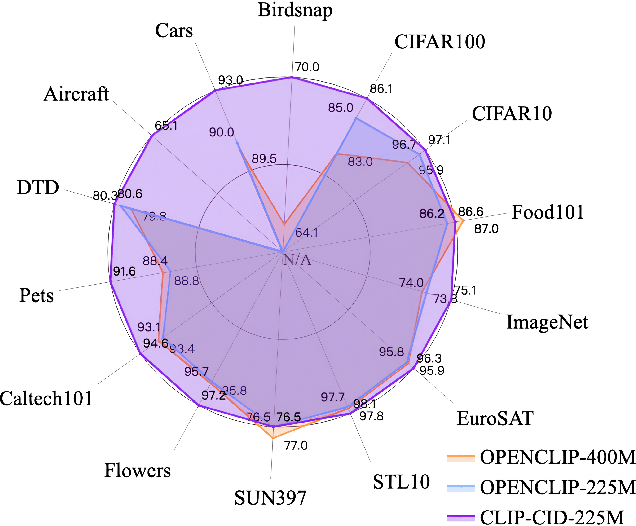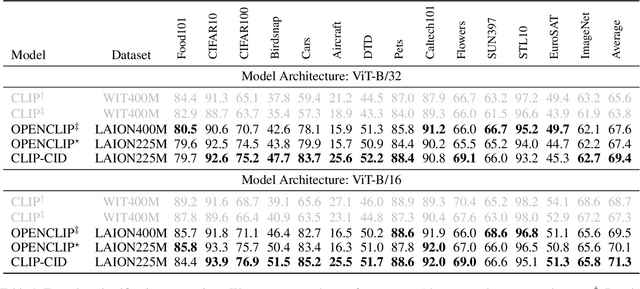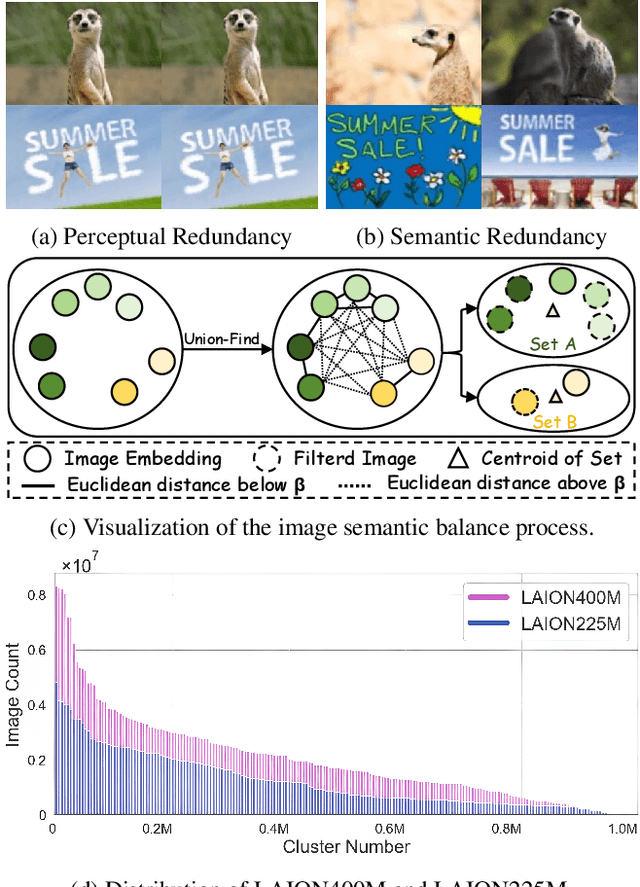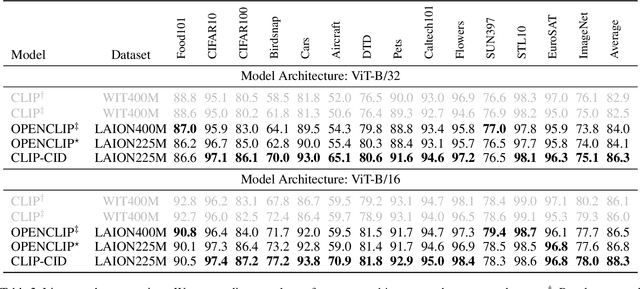CLIP-CID: Efficient CLIP Distillation via Cluster-Instance Discrimination
Paper and Code
Aug 18, 2024



Contrastive Language-Image Pre-training (CLIP) has achieved excellent performance over a wide range of tasks. However, the effectiveness of CLIP heavily relies on a substantial corpus of pre-training data, resulting in notable consumption of computational resources. Although knowledge distillation has been widely applied in single modality models, how to efficiently expand knowledge distillation to vision-language foundation models with extensive data remains relatively unexplored. In this paper, we introduce CLIP-CID, a novel distillation mechanism that effectively transfers knowledge from a large vision-language foundation model to a smaller model. We initially propose a simple but efficient image semantic balance method to reduce transfer learning bias and improve distillation efficiency. This method filters out 43.7% of image-text pairs from the LAION400M while maintaining superior performance. After that, we leverage cluster-instance discrimination to facilitate knowledge transfer from the teacher model to the student model, thereby empowering the student model to acquire a holistic semantic comprehension of the pre-training data. Experimental results demonstrate that CLIP-CID achieves state-of-the-art performance on various downstream tasks including linear probe and zero-shot classification.
 Add to Chrome
Add to Chrome Add to Firefox
Add to Firefox Add to Edge
Add to Edge